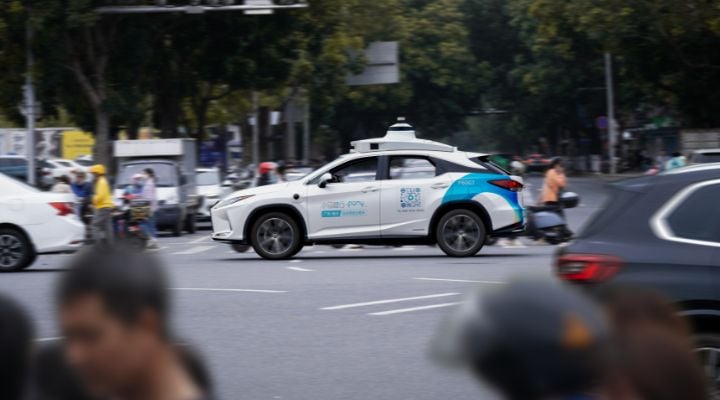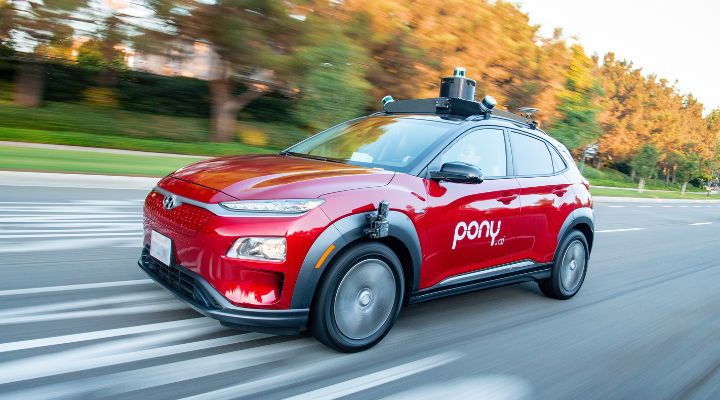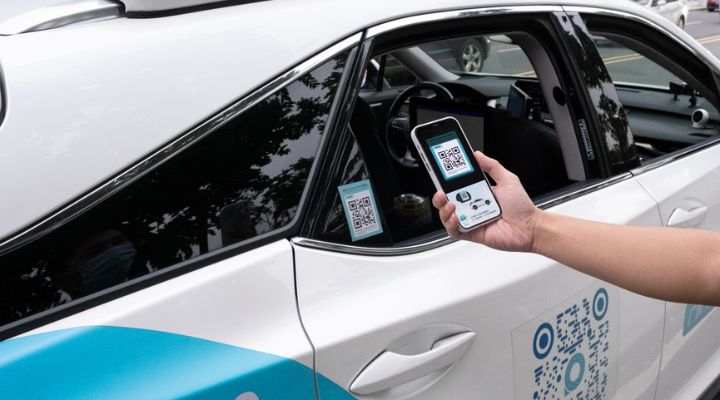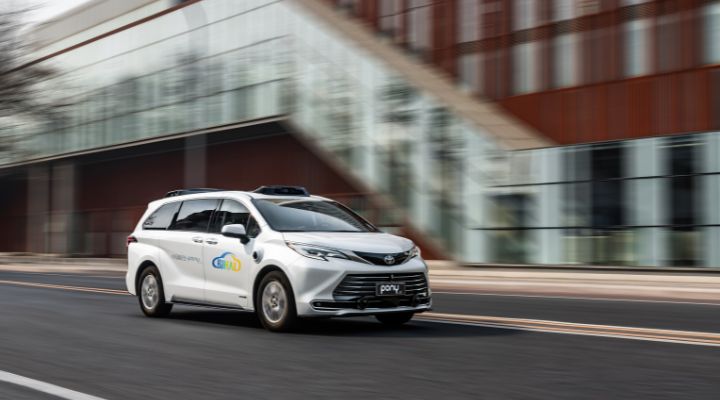Does my driverless vehicle trust me? The future of autonomous mobility
Founded in 2016 in Silicon Valley, Pony.ai has quickly become a global leader in autonomous mobility and is a pioneer in extending autonomous mobility technologies and services at a rapidly expanding footprint of sites around the world.
Operating Robotaxi, Robotruck and Personally Owned Vehicles (POV) business units, since being founded in California’s Silicon Valley in 2016 Pony.ai has become one of the most innovative companies in the autonomous mobility space. With a keen focus on the commercialisation of autonomous driving, as of May 2024 Pony.ai had accumulated a highly impressive 32 million kilometres of autonomous driving mileage across a variety of geographies and topographies.
Intertraffic caught up with Cameron Gieda, Pony.ai’s Director of Business Development to discuss what the future has in store for the autonomous mobility sector.

Intertraffic: Imagine for a second that you were talking to someone who had found themselves on our exhibit floor by accident – how would you explain to them what your company does and how it does it?
Cameron Gieda (CG): I'm on the business development side of Pony.ai, and a simple way of describing what we do is that we are an automated ride hailing company. In China, we're probably the second largest in the sector. The term du jour is Robotaxi and in the four main cities in China our taxi fleet is probably doing about 2500 rides a day and about half of those rides are with unmanned vehicles. So we're kind of halfway to having an entire fleet of completely unmanned vehicles. We also do robotic trucking. In the trucking equation, there's still a person in the truck, but the truck’s basically driving itself. And we have a little side business selling Nvidia hardware. We developed a computer for a customer, and now sell that same kind of thing to the likes of Oxbotica and other companies like that in the industry.

Intertraffic: There were a couple of excellent presentations that talked about San Francisco’s driverless taxi projects at Intertraffic Amsterdam in April, most notably with MAPtm’s Tom Alkim and the University of San Francisco’s Billy Riggs. Are Pony.ai playing any part in that? And is it fair to say that being a company with Chinese connections has made it very difficult to work in the US?
CG: We were founded in Fremont, California, in Silicon Valley and we were one of the first companies in California to do automated ride hailing service with UC Irvine back in 2019. So this predates the likes of Waymo and Cruise by some years. However, because we have some Chinese DNA, it's actually quite difficult for us to launch in the US. On the software side, we might sell higher level AI software, or an AI pipeline to help another OEM develop better software. And we do that with emerging EV companies, new OEMs, that probably don't have the money to stand up a big software programme to do near self driving up to level three. So that's kind of our play in the US.
Our automated ride-hailing service predates the likes of Waymo and Cruise by several years. However, because we have some Chinese DNA, it's actually quite difficult for us to launch in the US

Intertraffic: Hence your focus on Europe…
CG: ...but our main focus for AV deployment is in Europe. To put it simply we have found a little friendlier regulatory environment or some existence of a regulatory environment or the evolution thereof. There’s a greater need to, and really a willingness to, adopt these systems and to connect the suburbs to a city centre, wherein they had been using a big bus to do that, and they want to explore something that's less expensive and maybe more on-demand. We hear in every city in Europe that they cannot hire bus drivers. An interesting example is in the Vy network, which covers Sweden and Norway, they have 7000 bus drivers, the average age is 60. They have to hire 1000 new drivers every year just to replace the ones that are ageing out and retiring. So it's a problem that will at some point become intractable. We're not just trying to replace a bus driver, we're trying to think differently: if I can remove the bus, why don't we reimagine how the system can be changed? Make it more on-demand, make it more efficient for people. So not just getting you to the bus stop - actually getting you to your house.
Make transport more on-demand, make it more efficient for people. So not just getting you to the bus stop - actually getting you to your house

Intertraffic: A few years ago there was a lot of talk about introducing autonomous mobility projects to retirement communities, linking the residents with shopping malls, medical centres and so on. Is that something that you're looking at as well?
CG: One hundred percent yes. Whether it's an elderly community, or anybody on the outskirts of a city who doesn't have a way to get somewhere. But elderly communities and disabled people, thanks to the Americans for Disabilities Act, are a key underserved population. We think that we can unlock a lot of freedom for people in those situations. I run a lot of these meet-up groups and at one of them, this elderly gentleman shows up from a retirement community in central California who had just had a month-long pilot of a system just like that in Silicon Valley. He said that the transformation in their neighbourhood was amazing as they could suddenly get out and go to the pharmacy and go visit people and he was there to plead with companies like ours to deploy a permanent scheme. The issue is that it becomes a question of finances. It would be a little easier to implement and deploy in Europe than it is in the US where it's typically going to be a private business that's probably looking for more profit.
Intertraffic: Although it's perhaps older people that need this service, they're typically the social group that are less likely to want to use it and change their habits. How do you get over that barrier?
CG: I'm sensitive to it because previous to working at Pony I had a job where I was selling the concept of autonomous vehicles. As part of that demo, I was showing people how a car could drive by itself. I would do a little GPS guided route, take my hands off the wheel, and they could see it move by itself. We would try to do that in public forums, such as baseball stadiums or anywhere where a lot of people can be exposed to it at the same time. There's this strange psychology around complacency almost immediately when anyone feels comfortable with a new system. We did a study with the Society of Automotive Engineers, around five years ago, in Los Angeles. It was totally public facing. There was a short quiz beforehand: What do you think about this technology, that kind of thing. Almost exclusively people were afraid of it. There was some fear and trepidation or they'd been responding to misinformation. Within minutes of riding in an autonomous car there was a complete shift in attitude - more profound than I've seen on any other subject, wherein they really quickly say that it feels normal. Exposing anyone to the experience creates believers almost immediately. It suddenly becomes another modality that's completely accepted.
There's this strange psychology around complacency almost immediately when anyone feels comfortable with a new system.

Intertraffic: But there’s a big difference between being happy for a computer to make adjustments to your driving and handing complete control of your driving over to someone, or more pertinently something, else.
CG: Yes, that hinterland between ADAS and Level Four autonomy is vast. Yeah. The original Google Car, now Waymo, had no steering wheel. Then the US National Highway & Transportation Safety Administration (NHTSA) made them one and they didn't want it. Because anytime you put a human in the loop you introduce all sorts of other unforeseen events. We’re seeing this in a big way with ADAS today. Take the early Teslas as an example: you could do anything in the car while it was in full self-driving (FSD) mode - people were taking naps in the backseat. Now, it's kind of pitched in the other direction to very granular driver monitoring systems that if you mess around more than a few times, it doesn't allow you to use the FSD for a month. We’ve gone from “do I trust this vehicle” to “does this vehicle trust me?”
If you mess around more than a few times with the Full Self-Driving Mode, it ldoesn't allow you to use it for a month. We’ve gone from “do I trust this vehicle” to “does this vehicle trust me?”
Intertraffic: That’s been a question that has popped up from time to time over the last few years: why do autonomous cars have to look exactly the same as regular road vehicles?
CG: I'd say for the next five to seven years, they're going to be car-looking things that have been modified to be autonomous. And we've yet to really pass muster with regulators to put something on the highway that has no steering wheel that can go at highway speeds. There's a few Level Four autonomous shuttles, such as those that Renault and WeRide trialled at Roland Garros for the French Open in May, but they only travel at 15-20 km/h. I think those systems will come when the robustness of the software is able to do it and to be able to do it at speed. It doesn’t need to look like a car if it can be my office or my living room. I think that'll happen… but I think we're a decade out from that situation.





